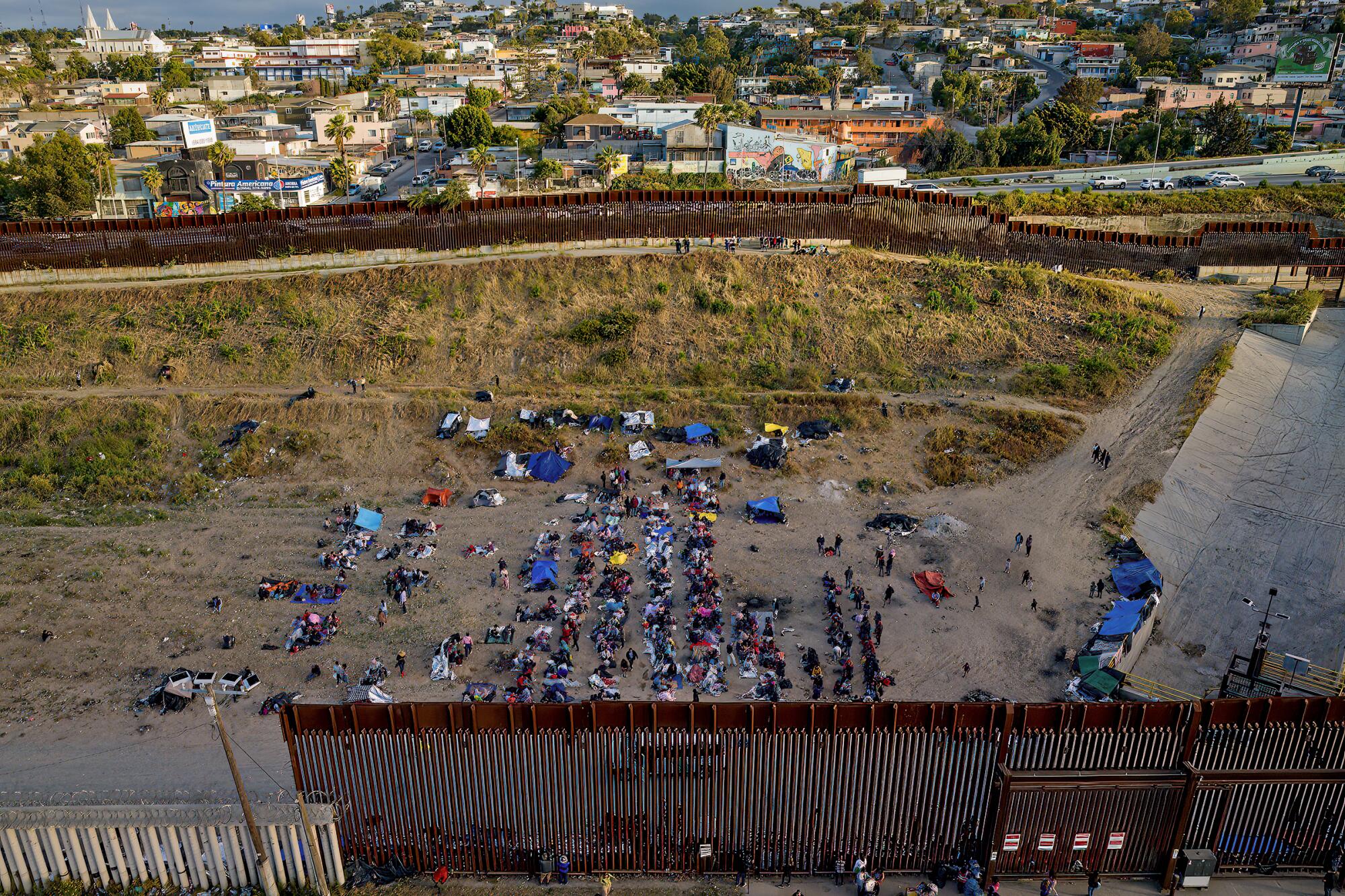
Hours after the end of Title 42 immigration restrictions, U.S. officials said they hadn’t seen an uptick in crossings at the border or any significant increase in migration.
Contentious immigration policy Title 42 expired late Thursday night at the southern border with Mexico, but by Friday morning, U.S. officials reported that they had not seen the massive increase in migrant crossings that some were predicting and anxiously awaiting.
Implemented by the Trump administration amid the COVID-19 pandemic, Title 42 allowed the government to prevent asylum seekers from entering the country. The policy has now been replaced by other restrictive policies that will make most who cross without making an appointment through a smartphone app ineligible for asylum.
Still, hundreds of migrants who had crossed before the change remained in open-air holding areas in several places along the California border — where they have been waiting in some cases for more than a week.
Many worried about whether they would still be processed under the system as it existed under Title 42 or whether the new, even more restrictive rules would affect them.
Secretary of Homeland Security Alejandro N. Mayorkas issued a warning Thursday that “starting tonight, people who arrive at the border without using a lawful pathway will be presumed ineligible for asylum.” He noted that 24,000 Border Patrol agents and officers had been deployed to work alongside “thousands of troops and contractors, and over a thousand asylum officers to help enforce our laws.”
“Do not believe the lies of smugglers,” Mayorkas said in a statement. “The border is not open. People who do not use available lawful pathways to enter the U.S. now face tougher consequences, including a minimum five-year ban on re-entry and potential criminal prosecution.”
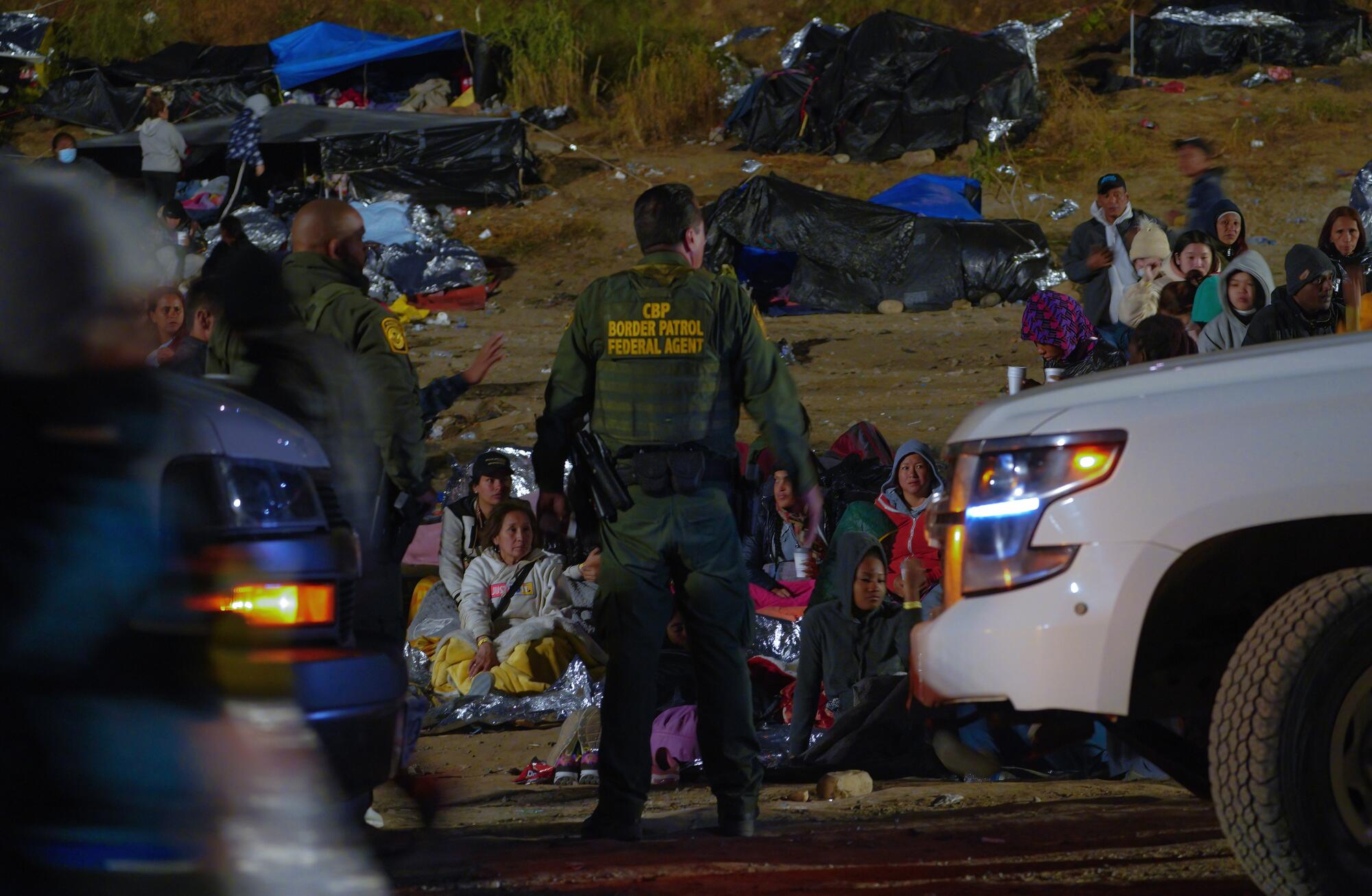
Government officials lamented a Thursday ruling from a federal court judge in Florida that blocked the Biden administration from releasing migrants in custody without court notices. The measure, officials said, was necessary given the numbers of people crossing the border and concerns about overcrowding. The administration said it would comply with the ruling and was considering next steps.
The San Diego Sector of Border Patrol had more than 3,300 people in custody as of Wednesday, according to data obtained by the Los Angeles Times. Border Patrol officials in San Diego have not responded to questions about how they are processing migrants nor have they released figures specific to the region.
Human rights workers and humanitarian aid volunteers continued to respond Friday to the open-air holding areas between the border walls across San Diego County with supplies including food, water, hygiene products and blankets for the hundreds of people held by Border Patrol. However, aid hadn’t yet reached another group of an estimated 500 to 800 people held in a more isolated area along the San Diego-Tijuana border.
On Friday, about 400 people were in an open-air holding area for families, women and children near a water treatment plant just over a mile from the San Ysidro Port of Entry, according to Pedro Rios, director of the American Friends Service Committee’s U.S./Mexico Border Program.

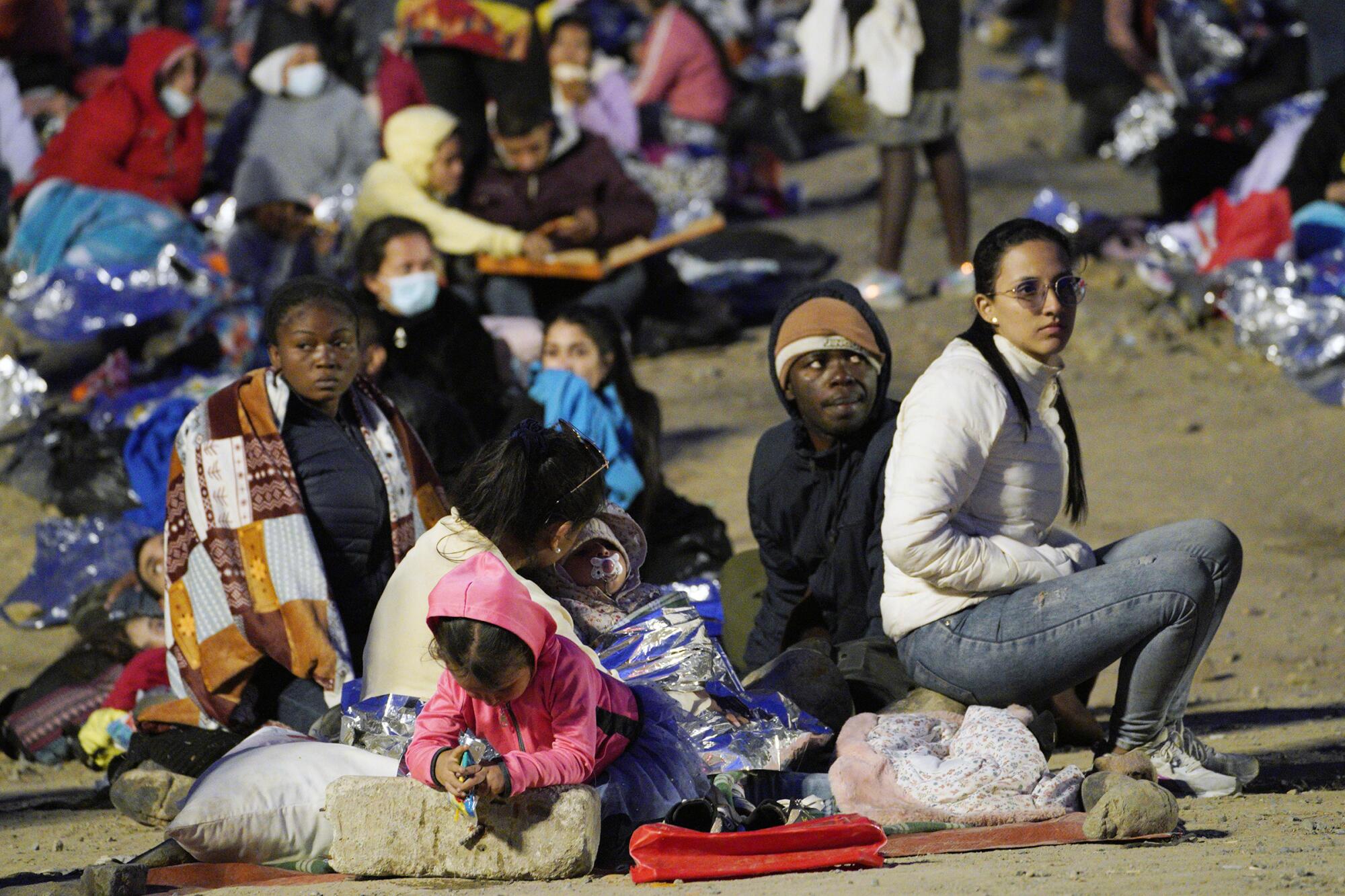
Among those waiting were an Ecuadorian journalist and his family. He fled after threats related to his work, and after he ended up between the walls, he began documenting the situation to send back to his newspaper in Ecuador.
“We’re here to be heard about the problems in our country,” he said in Spanish. “We’re very vulnerable.”
Several people providing humanitarian aid who had been there for the past few days recalled a woman from Afghanistan who was taken to the hospital on Wednesday from the enforcement zone between the walls. Thursday morning, the volunteers found her sleeping on the north side of the wall. She told them she’d been put in a taxi back to the border after being released from the hospital. The volunteers said Border Patrol declined to process her, so the humanitarian workers found an organization to offer her support.
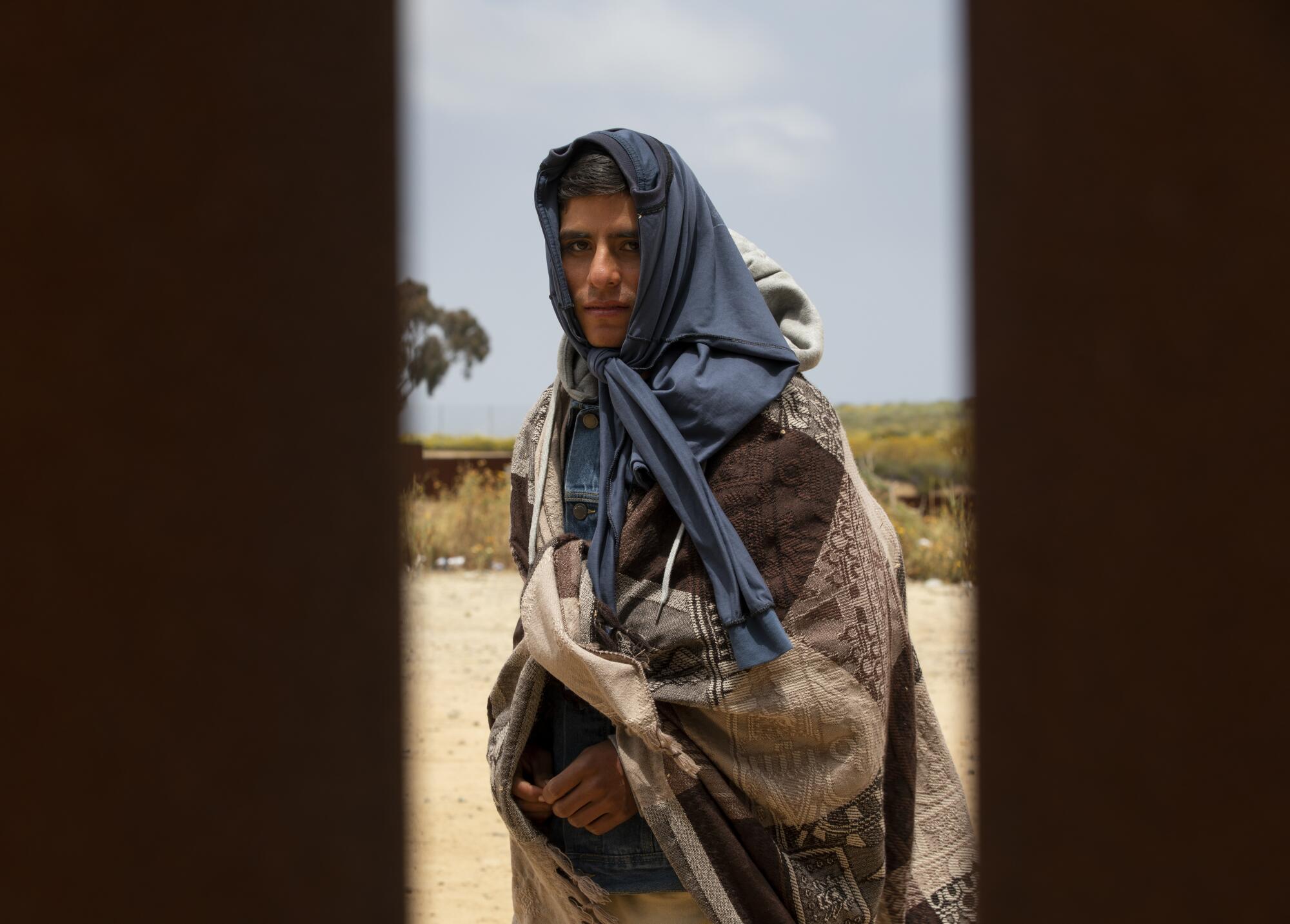
About a mile and a half west, a group possibly twice as large — all men — were being held in another border wall area.
Earlier this week, Border Patrol separated men traveling without their families from the group near the water treatment plant and moved them to this more remote part of the San Diego-Tijuana border. To reach them from the San Diego side requires hiking arduous terrain either through Border Field State Park or up steep hills from a Tijuana highway.
On Friday, the Union-Tribune met men from Turkey, Colombian, Ecuador, Peru, Ghana, Burkina Faso, Eritrea, Mauritania, Belize and Jamaica.
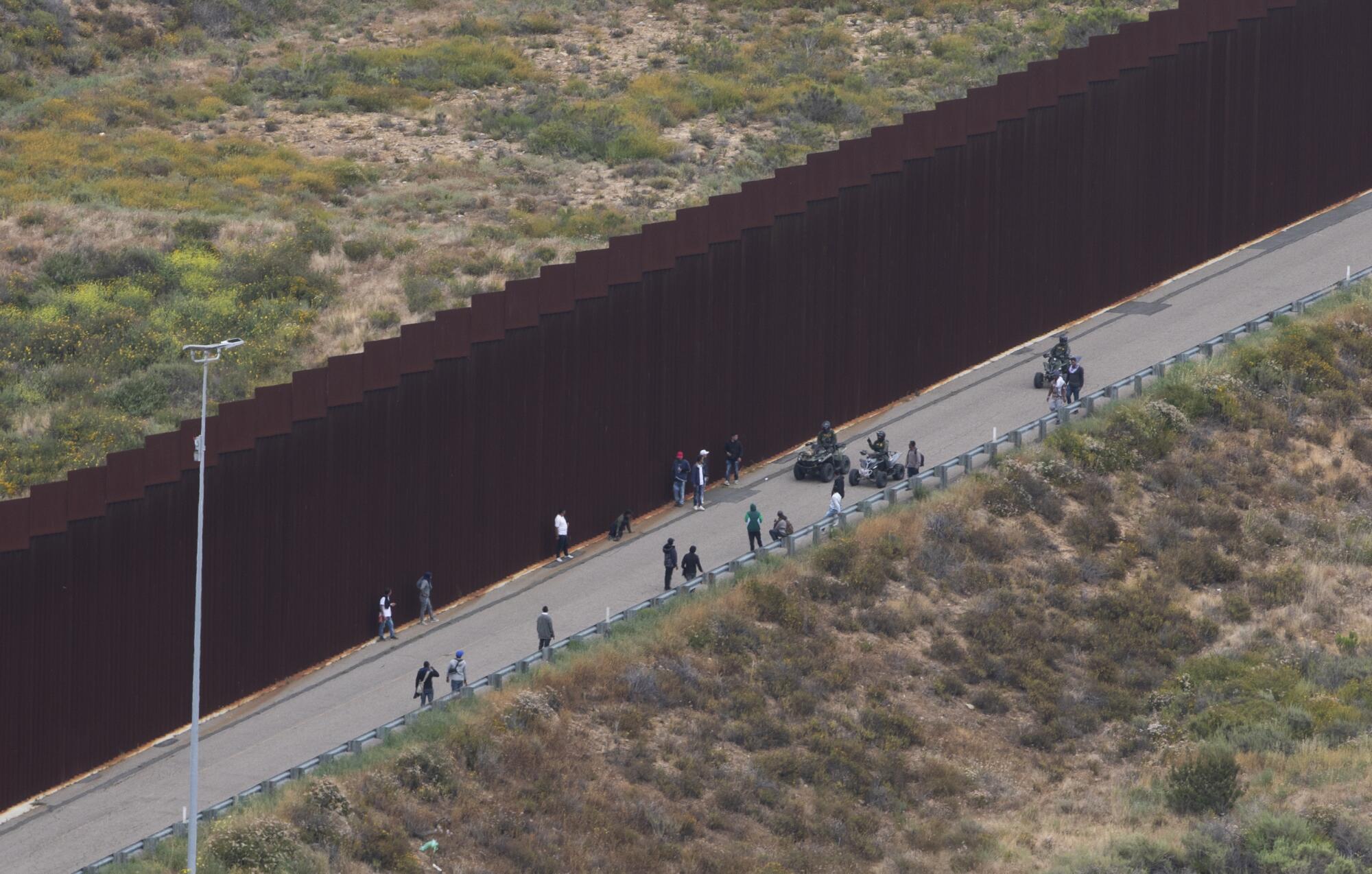
Several men said that they had been moved because some of the group’s members had caused problems with the women being held down the hill. Their processing has been slower than the families, the men said. Many have been there for five or six days, and some for more than a week.
They said they receive water and cereal bars from Border Patrol twice a day. Those with money buy overpriced food, portable batteries, extra layers of clothing and tarps from vendors who have trekked up the hill with their goods.
“Now we’re buying expensive things — $10 for one water. It’s not fair,” said a man who had fled Eritrea, a country known for indefinite military conscription and torturous prison conditions for those who try to leave.
He pulled a blueberry Nutri-Grain bar out of his pocket.
“This is lunch, nothing more,” he said.
He said many of the agents swear at them.
“Here we don’t have any rights,” he said. “We are also human beings. They don’t have to treat us like this.”
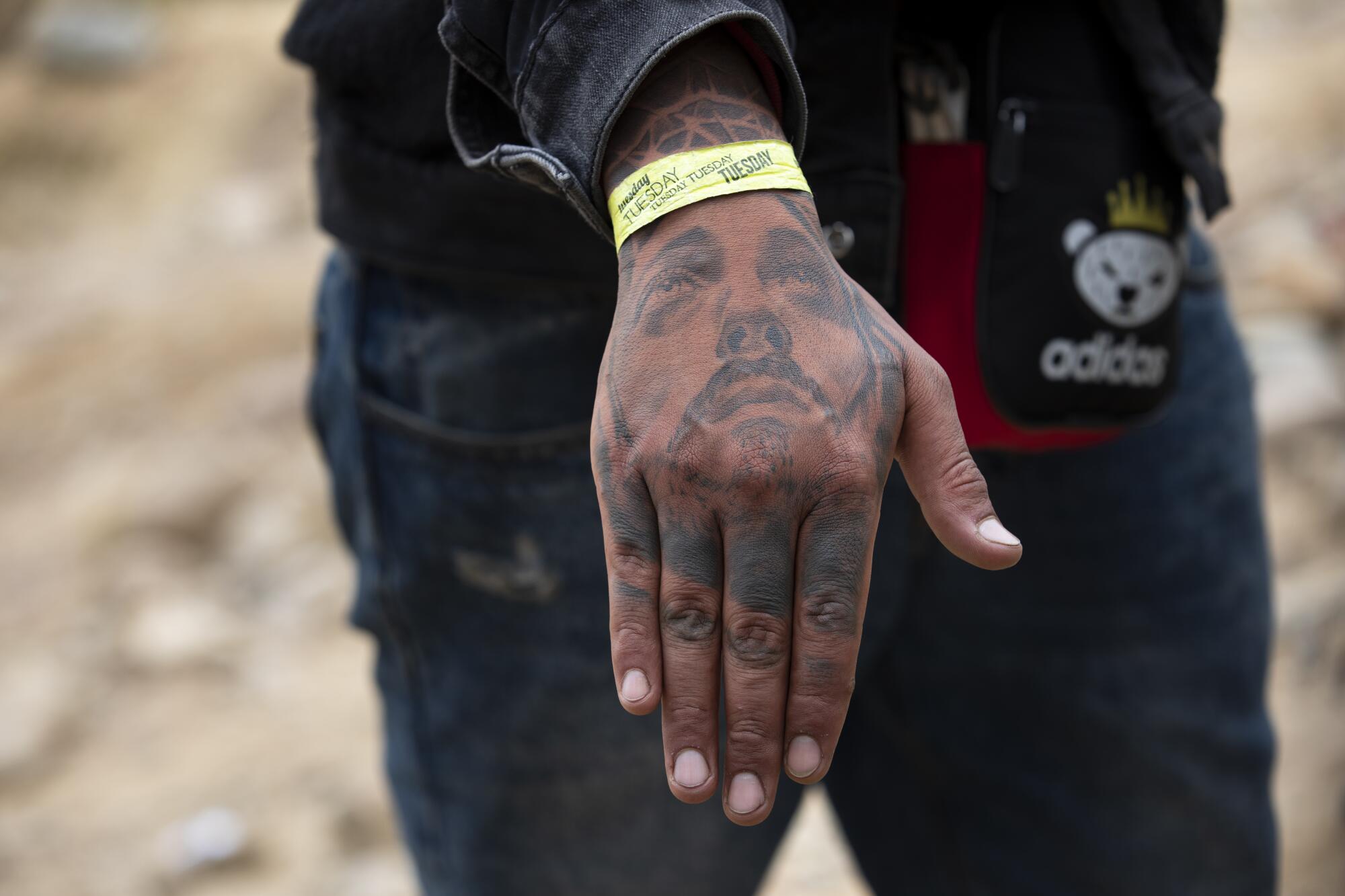
He said he and the other Eritrean men hadn’t planned their crossing around any U.S. border policy — they came when they were able to get there.
Many of the men were Kurdish people who had fled Turkey because of persecution based on their ethnic identity. They estimated that there were 100 to 200 of them.
“We came here for freedom,” one of the men said.
A group of about 10 of them worked together to build a makeshift dwelling of items they found between the walls — bits of rebar, sticks and netting. Other migrants had already built shelters from brush and twigs.
Among the Kurds was a man who said he identified as part of the LGBTQ community. He said that because of this, his religion and ethnicity, he faced many levels of discrimination in Turkey.
His nose had blistered from so much time in the sun.
“At night it’s very cold, and we’re just waiting everyday thinking tomorrow we pass,” he said, trying to express himself in the little English he knew.
About 75 miles southeast of San Diego, in the small high-desert town of Jacumba Hot Springs, about 550 migrants awaited processing at two makeshift camps.
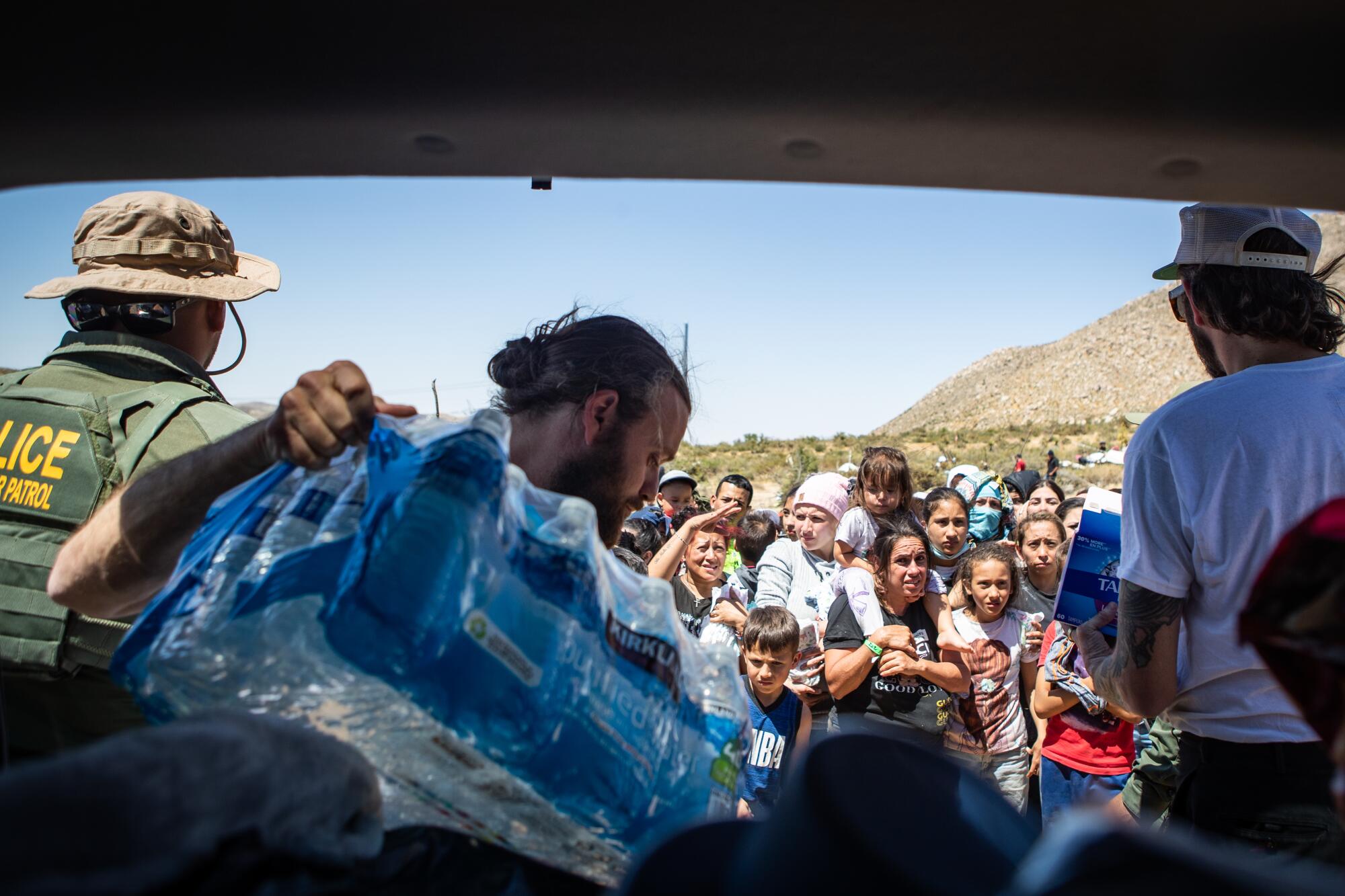
At midday, scores of people — many from Turkey, Mexico, Vietnam and Brazil — watched anxiously as a trail of dust rose from an approaching vehicle. A group of town residents soon pulled up to drop off more food and water.
Many in the group scurried toward the vehicle in hopes of obtaining any item possible. Leonardo Gauvidia, 24, of Colombia, didn’t rush, though. He sought something specific.
“My wife is the only one pregnant here,” Gauvidia, a nurse, said in Spanish. “She is ill and needs immediate assistance.”
Friday marked his third day in Jacumba.

An unspecified number of other migrants awaited in Marron Valley southeast of Otay Mountain.
The Jacumba residents and several organizations, including Catholic Charities, spent the day receiving donations to distribute at all three holding areas.
“We just started doing what we thought we should do to help out,” said Jeff Osborne, resident and owner of Jacumba Hot Springs Hotel.
On Friday, the Southern Border Communities Coalition issued a statement accusing Customs and Border Protection of violating the agency’s rules, as well as international and domestic custody standards, concerning conditions in the open-air holding areas.
“The United States can be a beacon for human rights, but our current treatment of migrants at the border falls short,” said the organization.
Catholic Charities — one of two organizations in San Diego County that receive government funds to temporarily house migrants once they’re released from the border — remained busy Friday setting up people in hotel rooms and shelters.
“Our shelters are not at capacity. We are still taking people and continuing our work,” the agency said.
The two sheltering organizations have been dropping off asylum seekers who have their proper papers and tickets for scheduled flights at San Diego International Airport, said airport spokeswoman Nicole Hall.
“We are not seeing people randomly dropped off. We had several busloads (of migrants) being brought by the charities,” Hall said.
According to Enrique Lucero, head of Tijuana’s migrant affairs office, between 5,000 and 6,000 migrants are currently in shelters around the city.

Knowing Title 42 had ended, several families, including some from Mexico, attempted to request asylum at the San Ysidro Port of Entry on Friday morning — without appointments in the CBP One smartphone app as is now required under the Biden administration’s new rules.
Border officials turned away the families.
Among them was a family of three — a father from El Salvador, a mother from Guatemala and their 3-year-old son. They’d been kidnapped and robbed numerous times on their journey to the border. They’d tried walking across the border near the Tijuana River near the El Chaparral pedestrian border-crossing plaza earlier in the week and were told that people of their nationalities couldn’t request asylum until Friday, they said.
They had attempted to request asylum in southern Mexico, but faced continued persecution both from the person they’d fled in Guatemala and from people in Mexico, so they continued north.
“Even if they don’t let us into the United States, they could help us get to another country,” the father said.
“We’re just looking for a safe place to be,” the wife added.
Mexico’s National Guard has been positioned along the southern layer of border barrier in recent weeks. Tijuana police also seemed to more closely monitor activity at ports of entry.
U.S. border authorities across the southern border are expected to be joined in the coming days by 1,500 troops, including about 200 Marines from Camp Pendleton.

Staff writers Tammy Murga, Alexandra Mendoza, Lori Weisberg, Paul Sisson, Emily Alvarenga and Alex Riggins contributed to this report.
Updates
11:13 a.m. May 12, 2023: This story has been updated with details from the San Diego-Tijuana border.
Get Essential San Diego, weekday mornings
Get top headlines from the Union-Tribune in your inbox weekday mornings, including top news, local, sports, business, entertainment and opinion.
You may occasionally receive promotional content from the San Diego Union-Tribune.

